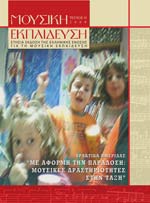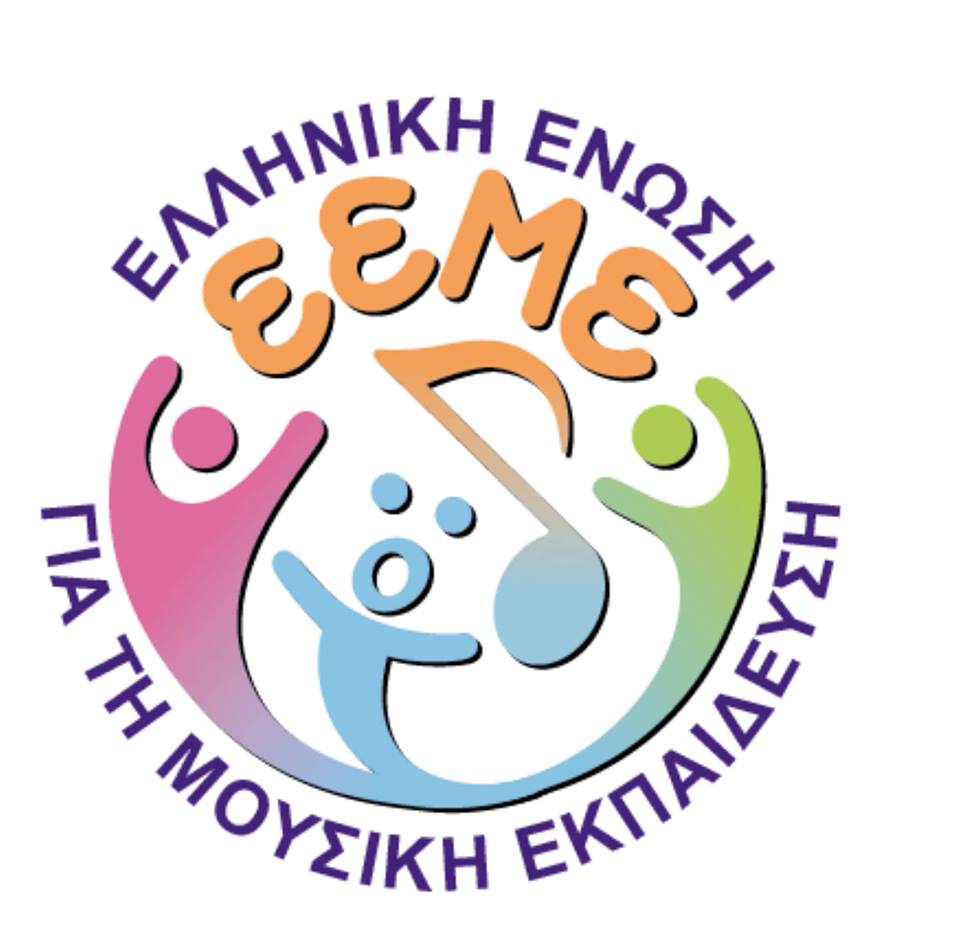
Contents:
1) Evaggelia (Gelly) Mitrogianni: Teaching the duration of sound... through a tale
2) Zoe Dionyssiou, Electra Vlachonicolou, Katherine Korakianiti, Barbara Paraskevopoulou, Maria Xekardaki & Eleni Christidoulou: Description and evaluation of a music education program of the Solomos Museum in Corfu
3) Elissavet Perakaki & Sofia Saiti: When poetry "sings" and music "recites"
4) Zoe Dionyssiou: Here comes Lazaros, here comes the Palm day: spring carols in the class
5) Eleni Tsoutsia-Loulaki: "From August there comes winter and from March there comes summer", teaching music with Greek folk tradition, day by day
6) Theocharis Raptis: Instruction of traditional musical instruments. Theoretical perspectives and practical applications
7) Maria Kourkourika: Playing music, learning music
8) Yannis Stavrou: Modern presentations of old songs
Abstracts:
1) Evaggelia (Gelly) Mitrogianni
Teaching the duration of sound... through a tale
Illustration: Evi Panagiotakis
"The instruction of the duration of sound at Primary School and the comprehension of this topic by the students is an issue that preoccupies many of the music educators. This article presents, through a personal tale an interdisciplinary plan of a music course that aims, for the students that will participate in the latters activities, on the one hand to make them comprehend the feature of sound duration and on the other hand, upon completion of the course, to enable them to classify sounds around them in short or lengthy sounds. The course is mostly addressed to the learning level of the students of first (and second) class of the Primary School. It should be noted that its use on older children is not excluded (with the appropriate modifications by the teacher), as long as there has never been previous relative experience around this issue, or comprehension of the feature of sound duration" (p. 22).
2) Zoe Dionyssiou, Electra Vlachonicolou, Katherine Korakianiti, Barbara Paraskevopoulou, Maria Xekardaki & Eleni Christidoulou
Description and evaluation of a music education program of the Solomos Museum in Corfu
The educational programme "I recognize you from the side": a musical journey through the life and work of Dionysios Solomos" took place in Corfu at the Solomos Museum in collaboration with the Department of Music, Ionian University from May 2007 to spring 2008. The present article refers to the planning of the programme, the main purpose and aims as well as the materials and means used. It further explains the education procedure in which the students were actively involved, i.e.: their familiarization with the museum and the educational activities per se. Upon completion of the tasks the participants were asked to comment on the programme by providing feedback on which the evaluation was based. The article finally offers suggestions on the prospective application of this programme either in the school curriculum or in other related subject matters (p. 40).
3) Elissavet Perakaki & Sofia Saiti
When poetry "sings" and music "recites"
Poetry and music can be creatively combined in teaching through poetry set to music. Both these art forms use the sound in order to express, use the rhythm and promote the emotional expression and the imagination of students. The melody of the poem-song comes directly from the text since the composer follows what he felt was the music content of the poem. The inter-disciplinary curriculum aims in treating the syllabus holistically; students analyze, compare and compose elements from both topics. This will be demonstrated through classroom activities. These activities therefore are easy to apply in every poetry teaching and can be enriched or altered based on the capacity of students (p. 49).
4) Zoe Dionyssiou
Here comes Lazaros, here comes the Palm day: spring carols in the class
Folk music tradition is not usually part of the content of the music lesson. It is not among the popular repertory of the school festivities either. Music teachers often have little or limited knowledge in folk music, unless they have a personal interest in it. Hence, folk or popular music is at the outskirts of the school repertory. Some systematic study of folk music only takes place in Music Schools (Secondary Schools - consisting of Gymnasium and Lyceum), aiming at the teaching and learning of a folk instrument. Despite these circumstances we believe that the music teacher can use some of the endless repertory of folk music, and organise many original, creative and unique activities for their students. Taking Lazarus carols as an example, this paper examines how some folk songs and customs that relate to the rise of St. Lazarus and are not popular in contemporary urban society can take place in the music classroom (p. 63).
5) Eleni Tsoutsia-Loulaki
"From August there comes winter and from March there comes summer", teaching music with Greek folk tradition, day by day
This study is based on the role that the folk music should have, in primary schools. In this paper, I examine how music can be taught in primary school exclusively through Greek folk tradition. Τeaching music on the basis of Greek folk songs of the circle of the year, will enable the children to learn not only music, but also the history that each one of these songs involves, a history that the teacher has to unveil and communicate to the children leading them to the source of knowledge. The folk songs have a special sound and rhythm; they transferred images, odor, and taste. These feelings are to be rediscovered. There are lots of songs that we can choose for teaching. For example, there are songs of the years circle and among them other songs, nursery songs, children songs, rhymes etc. The essence of folk songs is the absolute relation between individuals and society. This relationship can be found in the participation of the individual in the collective dance, the connection between the instrument player and the singer, the will of the sum of them to express situations, feelings, meanings and needs of individual life and the collectivity. In this way, the lesson of music offers to children the chance to travel all over Greece, learn about its history, its songs, dances, tradition and customs, appreciate a way of living different and much more humanistic than our own (p. 73).
6) Theocharis Raptis
Instruction of traditional musical instruments. Theoretical perspectives and practical applications
The discussion initially revolved around some of the paradoxes in the field of music education in Greece which relate to the instruction of traditional music instruments and then relevant suggestions to teachers were made. Those concerned the way the student would approach the new instrument and the culture it represents, the way the teacher could stimulate the students interest in new knowledge, the way the student would seek his/her personal development beyond the already known, the role the music notation could play during the instruction process. Despite all the difficulties involved these suggestions could constitute an important step towards the first but essential contact of general education students with the traditional music instruments (p. 80).
7) Maria Kourkourika
Playing music, learning music
The present project aims to sensitize and present new ideas and material to teachers of pre-school education in order to create interdisciplinary music learning activities. The teacher can teach music concepts, and other disciplinary perspectives, with a pleasant and cheery way without missing strict educational targets. The material for the presented activities is drawn from the Greek tradition (fairytales, traditional children games, proverbs, fables, traditional songs and sounds of musical instruments etc.). The school takes the role of a transmitter of tradition to the next generation. Activities with singing, music listening, playing with simple instruments etc. become occasions for activities which are closely connected with other domains of learning. Students, simple by playing music in this context, are guiding from the teacher to learn also music (p. 90).
8) Yannis Stavrou
Modern presentations of old songs
The functionalism of traditional music in the western societies has been altered considerably as disappears the environment and the processes of creation and her culture. After a period re-appraisal of nature of traditional culture and revision of importance of traditional music, in all rungs of education it is today faced, at least, with respect in a direction of search in streets about contact and acquaintance of new members with their traditional culture. Object of proposal is the growth of speculation with regard to the exploitation of older songs than the education and the benefit of corresponding supplies. In this direction are presented relative opinions as well as a Drawing of import of traditional song in class with proportional activities. Protractor for the designing and application of this import of traditional song constitutes the conviction that the traditional music in order to it exists in the current and future conditions should not be faced as past, but, on the contrary, is necessary to change functionalism and to include itself in the daily life of children (p. 99).





 Please wait...
Please wait...